You often connect your photography to your mental-health journey. How did photography first become a way to express and process those experiences?
Photography began for me not just as a way to make beautiful images, but as a lifeline. Growing up in a conservative Christian environment, I felt the weight of theology, expectations, and the tension with my own identity, particularly my sexuality. The camera became a way to externalize what felt like an internal storm of emotions.
At my lowest, my earliest works were surprisingly playful, colorful, and even quirky, almost as if I were subconsciously creating a safe world for myself. Over time, as I pursued therapy and began caring for my mental health, my work shifted. The images grew darker, more reflective, carrying the weight of the struggles I had long tried to silence. But that shift was crucial: photography became a tool of resilience, a way to see myself honestly, to acknowledge trauma, and to heal through it.
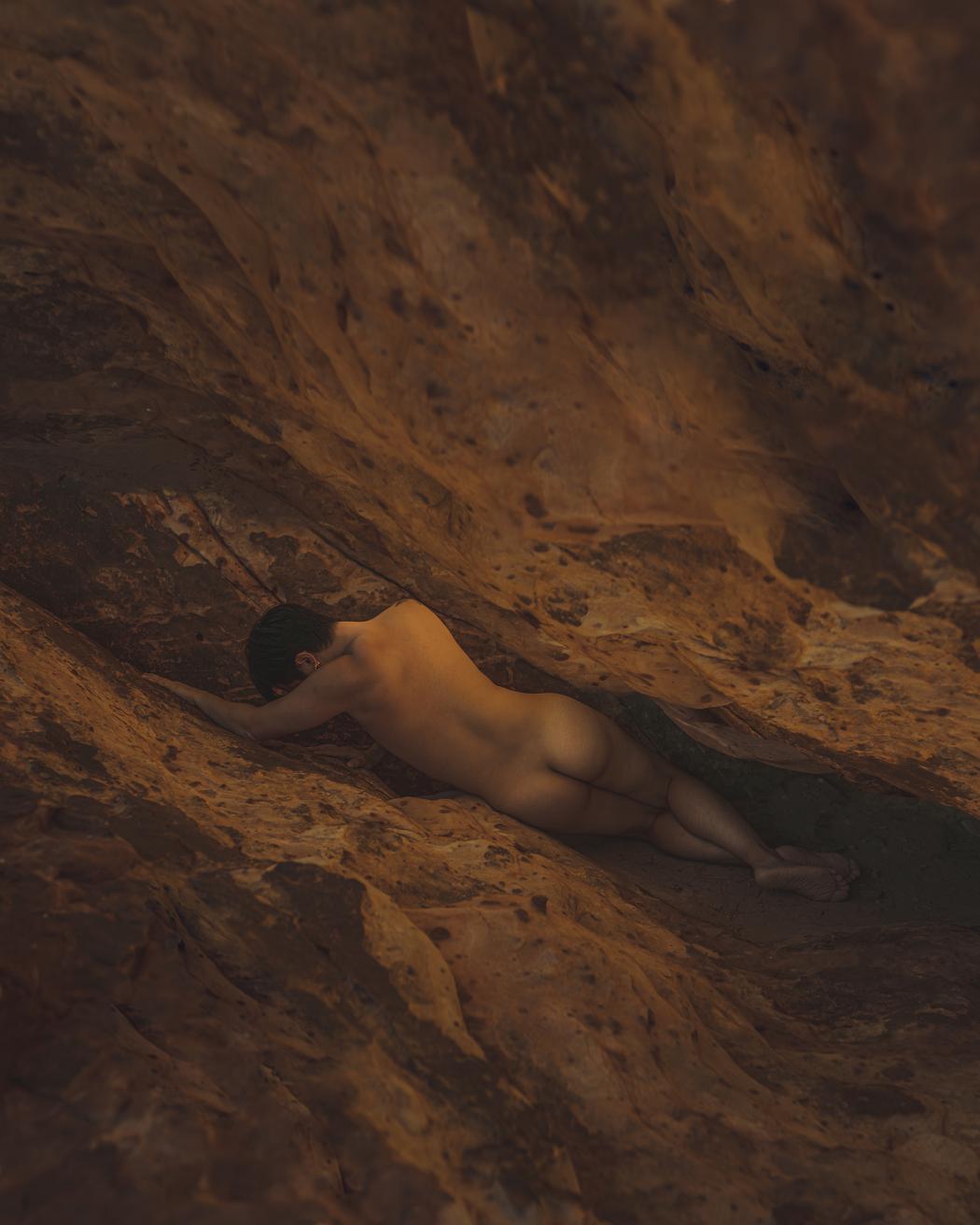 Dustin-David Chu | Chasm
Dustin-David Chu | Chasm
You have lived in different cities—Portland, Seattle, Las Vegas, and now the Bay Area. How have these moves influenced your artistic perspective and subject matter?
My artistic journey has been shaped by the places I’ve called home. I began my journey in the lush landscapes of the Pacific Northwest, capturing mountains, rivers, and the quiet details of nature. Seattle invited me to look closer, to experiment with abstraction and minimalism, finding beauty in overlooked objects and everyday spaces. Then came Las Vegas: stark, bright, and almost devoid of the greenery I was used to. That contrast pushed me toward portraiture, where the human presence became my landscape. As a naturally shy person, the camera became my bridge—an invitation to approach others, to connect, and to collaborate. Each move carried its own lessons, shifting my perspective and expanding the way I understand both art and people.
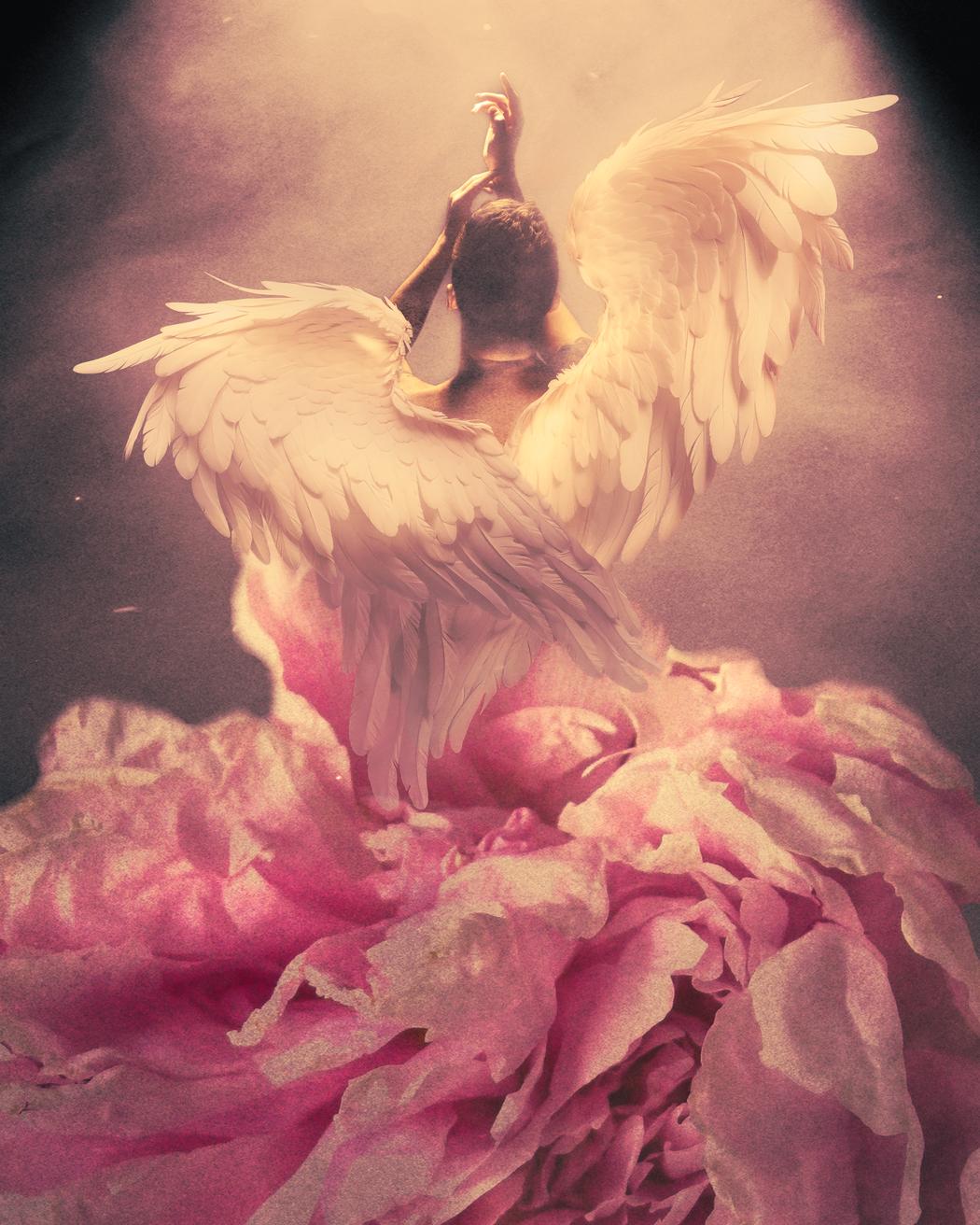 Dustin-David Chu | Angel’S Light
Dustin-David Chu | Angel’S Light
Your self-portraits are rich in symbolism and dramatic lighting. Can you describe your creative process—from concept to final image?
I’ve always been drawn to avant-garde and baroque portraiture: the drama of light, the emotional weight of a longing gaze. That language of chiaroscuro and symbolism deeply influences my own self-portraits and other subjects as well. Most concepts begin with a question: how can I translate a specific emotional or psychological experience into a visual form? From there, I think about the ‘what’ and the ‘how’—what the emotion felt like, and how that feeling might manifest symbolically.
Sometimes it’s being torn apart, sometimes it’s the presence of a shadow self. I’ll sketch or visualize the idea, then consider the technical elements: how light should fall across my face, which colors or props might embody the theme, and what composition will carry the weight of the story. The final image emerges through multi-layering: shooting, refining, and editing until the photograph no longer just depicts me, but becomes a reflection of the inner state I was trying to confront.
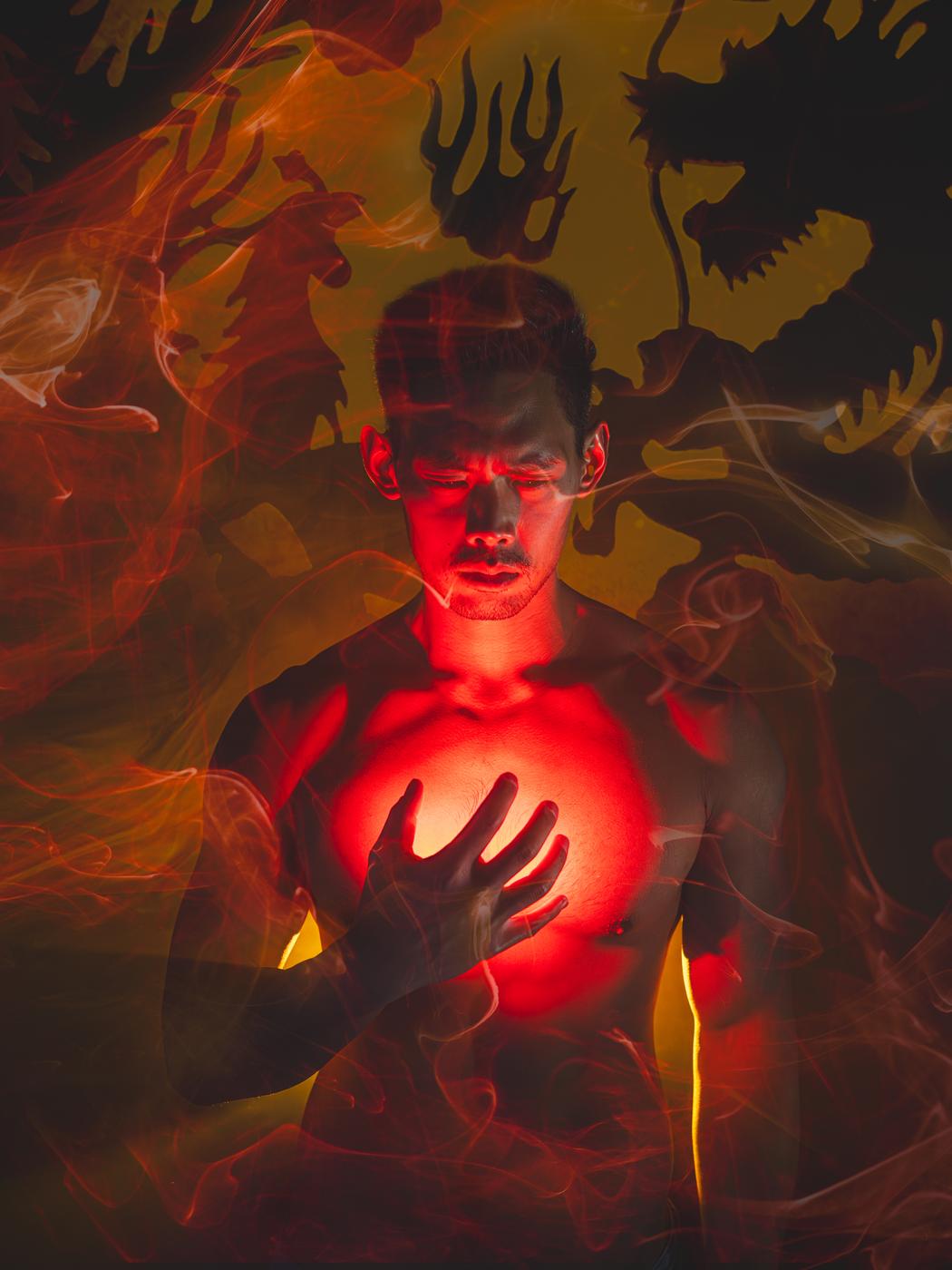 Dustin-David Chu | Project Sleeping Dragon
Dustin-David Chu | Project Sleeping Dragon
How do poetry and photography intersect in your practice? Does one medium influence or inspire the other?
I don’t necessarily believe a photograph speaks a thousand words on its own. For me, the image and the poem complete each other. The photograph captures presence and vulnerability, while the poem carries memory and inner dialogue.
In my self-portrait, Chasm, my body lies pressed into the earth, cradled yet engulfed by stone. Visually, it speaks to collapse, to being swallowed by forces larger than myself. The accompanying poem gives that silence a voice: describing tremors, fractures, and the upheaval of inner foundations. They embody what it feels like to live through trauma: the ground beneath you suddenly unstable, the world you thought you knew breaking apart.
The photograph alone conveys stillness and surrender; the poem introduces the unseen quake beneath the surface. Together, they show both the fragility and the strength within me: that even in moments of collapse, there’s still something human and real worth seeing.
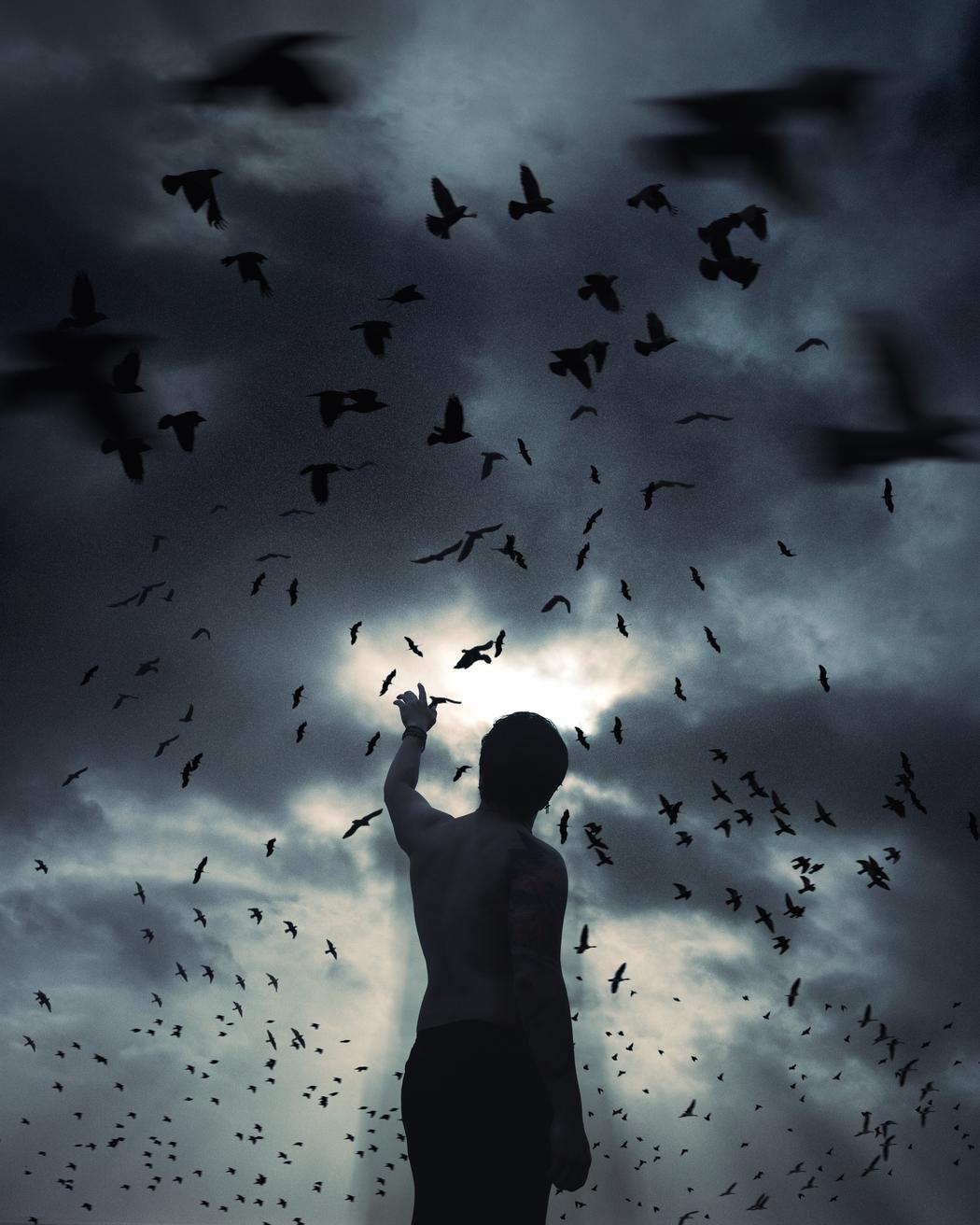 Dustin-David Chu | Take Me With You
Dustin-David Chu | Take Me With You
Many of your works balance darkness and hope. How do you find that equilibrium when creating a series?
Finding a balance between darkness and hope is sometimes intuitive, sometimes very deliberate. Emotionally, I’m often in that place between despair and longing, but also yearning for light, and I try to let that tension live in my work. Technically, I use lighting, color, and shadow to mirror that tension: deep shadows, strong contrast, but with bursts of vivid color for accents, or moments where light breaks through, literally or metaphorically.
When planning a series, I always think about the narrative, similar to my philosophy about mental health: there has to be a journey. The darkness can’t just be there for aesthetic; it needs to serve the hope. The motifs, the mood shifts, the way the subject or self-portrait moves through the frames, all help to show that hope isn’t separate; it often emerges because of the darkness. The hardest pieces are the ones where hope feels forced, so I try to be patient, to let hope emerge through authenticity.
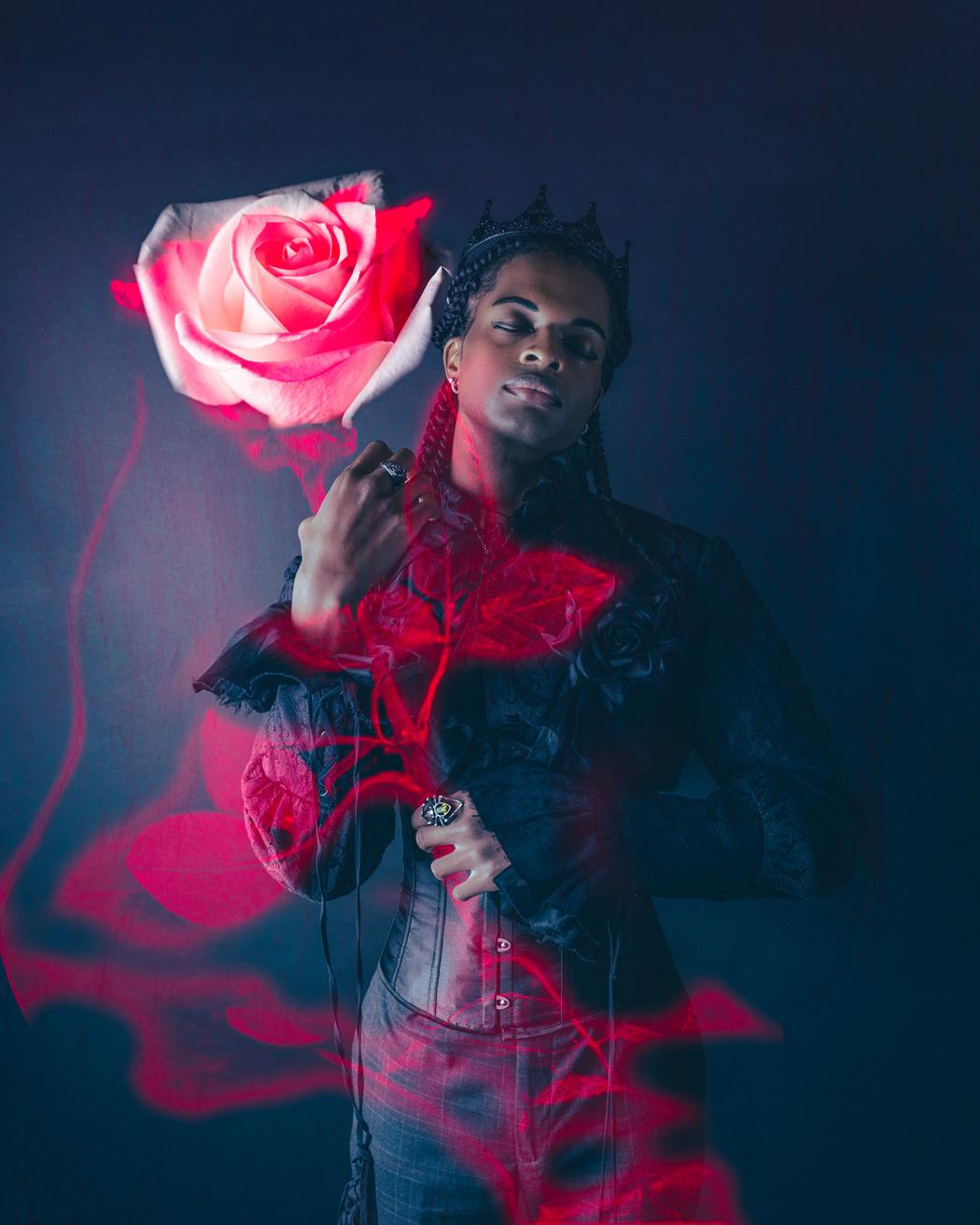 Dustin-David Chu | The Rose
Dustin-David Chu | The Rose
Birds, roses, and vivid colors recur in your images. What do these motifs symbolize for you?
Each motif has layers of meaning for me; they will often overlap or shift depending on the piece or what I was going through when I made it.
Birds often symbolize freedom, the possibility of transcending from one plane to another. They represent escape, a longing to be free, the ability to soar above constraints, especially those internal or societal constraints. At the same time, they remind me of fragility, of the tension of wings, that reaching for freedom often comes with risk, with vulnerability.
Roses carry both beauty and pain. Rose petals are lush, vivid, sensuous; the thorns are sharp. For me, a rose is about love, desire, but also about the wounds we carry. It’s about maturing and looking back and growing from the pain.
Vivid colors in my work are a way to convey how strong the emotions are. Colors are emotional in themselves. They can feel overwhelming, joyful, and defiant. Sometimes using bold color is like raising a flag: this is me, this is my feeling, this is what I’m refusing to hide. At the same time, color can be a bridge toward hope: in darkness, color becomes more noticeable, more precious.
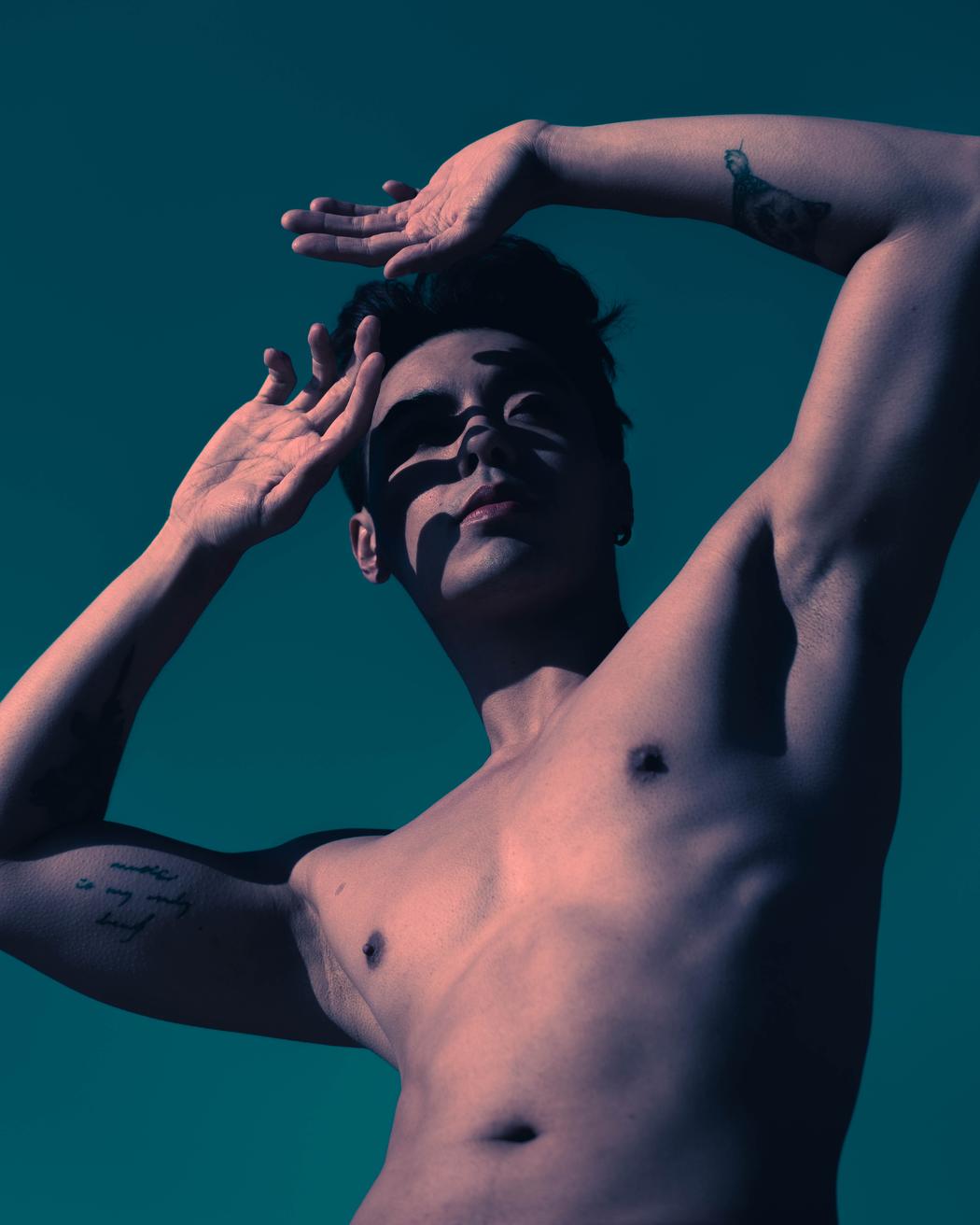 Dustin-David Chu | The Weight Of Light
Dustin-David Chu | The Weight Of Light
What advice would you give to emerging photographers who want to tell deeply personal stories through their art?
Three pieces of advice. First, be honest with yourself, even when it’s scary. Personal work can mean being vulnerable. Let yourself feel uncomfortable. Let your doubts, your fears, your contradictions show: often that’s where the richest work comes from.
Second, give yourself the space and time. You don’t have to rush because creating pieces of personal work often unfolds slowly. Did the story you’re trying to tell come to an end? Or is it still being written? Some ideas need simmering: emotional, technical, and conceptually. Shoot, reflect, pause, repeat. Again, don’t rush yourself.
Third, protect your mental health. Telling personal stories means revisiting hard things. Set boundaries with yourself. Create rituals that help you close a session or decompress. Art can heal, but it can also reopen wounds, so be gentle and patient with your audience and yourself. Sometimes people will misinterpret or not see what you meant. That’s okay. The person who matters most is you, and the truth you need to see. Keep making, keep refining.

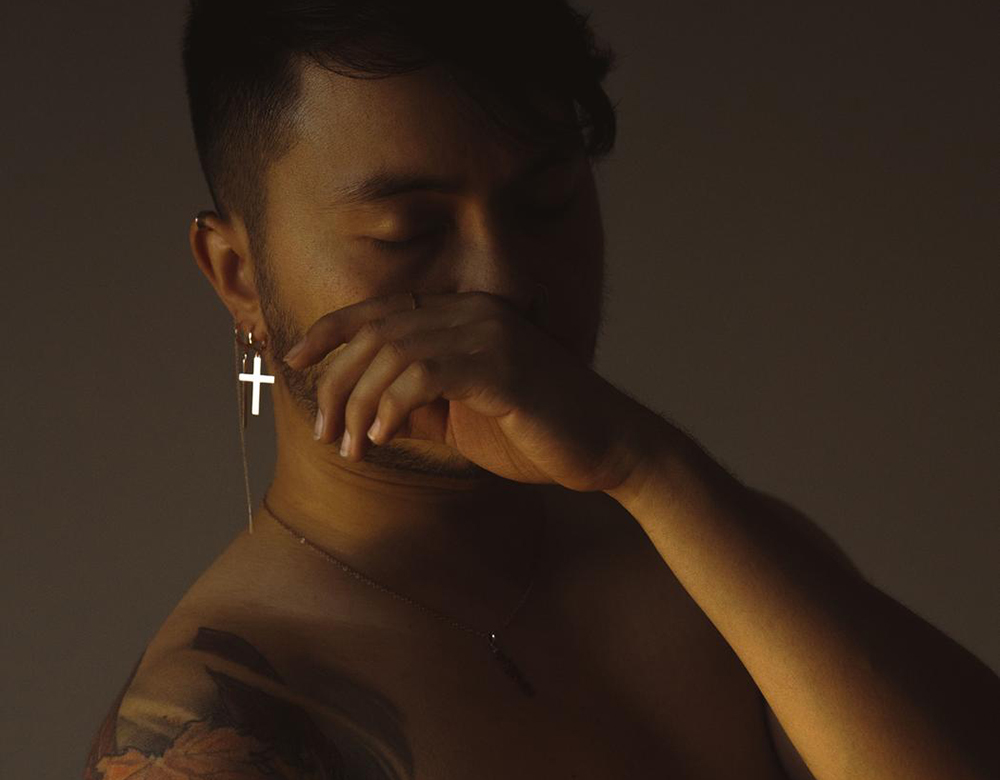
0 comments on “Dustin-David Chu”